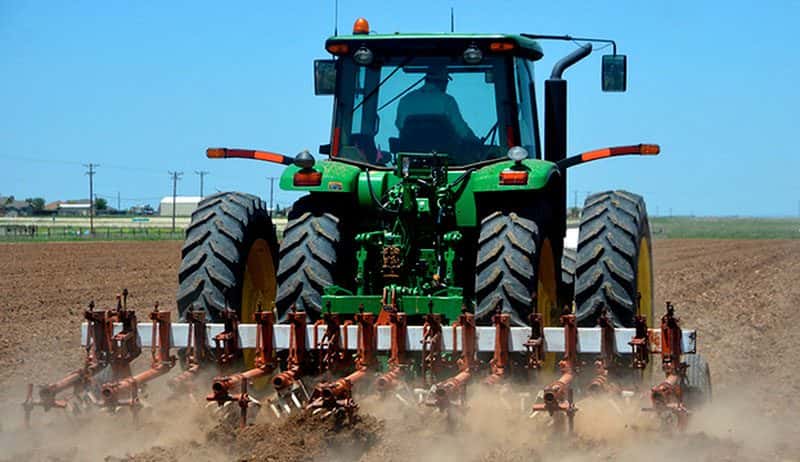Farming is an ancient art that has evolved significantly over time, with modern technology revolutionizing agricultural practices. Central to these advancements are various types of farm equipment, each serving a crucial role in different stages of the farming process. In this blog, we’ll delve into essential farm equipment, exploring their types and names to understand their significance in contemporary agriculture.
1. Tractors:
- Utility Tractors: Versatile machines suitable for a wide range of tasks, from plowing to hauling.
- Row Crop Tractors: Designed for precise row cultivation in crops like corn, soybeans, and cotton.
- Orchard Tractors: Compact tractors tailored for maneuvering in orchards and vineyards with narrow rows.
- Compact Tractors: Small, maneuverable tractors ideal for landscaping, gardening, and light-duty farm work.
2. Harvesters:
- Combine Harvesters: Multipurpose machines that reap, thresh, and winnow grain crops like wheat, barley, and rice.
- Potato Harvesters: Specialized equipment for lifting and separating potatoes from the soil.
- Sugarcane Harvesters: Machines designed to cut and load sugarcane stalks for processing.
- Cotton Harvesters: Mechanized harvesters that pick cotton bolls from plants for textile production.
3. Plows:
- Moldboard Plows: Traditional plows with a curved moldboard for turning soil over and burying weeds.
- Disk Plows: Implements equipped with multiple rotating disks to cut and loosen soil.
- Chisel Plows: Implements featuring chisel-like teeth for breaking up compacted soil without inverting it.
4. Planters and Seeders:
- Precision Planters: Equipment designed for accurate placement of seeds at precise depths and spacing.
- Air Seeders: Implements that use compressed air to distribute seeds uniformly across the soil.
- Grain Drills: Machinery for planting seeds in rows or furrows at controlled depths.
5. Sprayers:
- Boom Sprayers: Equipment with extending arms (booms) for spraying crops with pesticides, herbicides, or fertilizers.
- Airblast Sprayers: Machines capable of delivering a fine mist of chemicals or nutrients to orchard crops.
- Handheld Sprayers: Portable devices for spot treatment or small-scale applications in gardens or nurseries.
6. Cultivators:
- Rotary Cultivators: Implements with rotating blades or tines for breaking up soil and controlling weeds.
- Tine Cultivators: Machines equipped with rigid or flexible tines for shallow cultivation between crop rows.
- Harrows: Implements with teeth or discs for smoothing and leveling soil, as well as incorporating crop residues.
7. Irrigation Equipment:
- Drip Irrigation Systems: Systems delivering water directly to plant roots through a network of tubes and emitters.
- Center Pivot Systems: Large-scale irrigation systems rotating around a central pivot point to water crops in circular patterns.
- Sprinkler Systems: Systems dispersing water over crops through sprinkler heads mounted on pipes or towers.
8. Hay and Forage Equipment:
- Balers: Machinery for compressing and binding hay, straw, or other forages into compact bales for storage or transport.
- Mowers: Implements for cutting grass or forage crops to the desired height for haymaking or silage production.
- Tedders: Equipment for spreading and aerating freshly cut forage to facilitate drying and curing.
- Hay Rakes: Implements for gathering and arranging cut forage into windrows or rows for baling or ensiling.
9. Livestock Equipment:
- Feeding Equipment: Devices for delivering feed to livestock, including troughs, feeders, and automatic feeding systems.
- Watering Systems: Infrastructure for providing clean and accessible water to animals, such as troughs, pipelines, and automatic drinkers.
- Handling Facilities: Structures or equipment designed for safely restraining, sorting, or treating livestock, such as pens, chutes, and squeeze gates.
10. Grain Handling Equipment:
- Grain Augers: Machinery for conveying grain or other bulk materials vertically or horizontally using a rotating helical screw.
- Grain Carts: Mobile wagons or trailers for transporting harvested grain from the field to storage or processing facilities.
- Grain Elevators: Tall structures equipped with conveyor belts or buckets for lifting grain to different levels for storage or loading onto trucks or trains.
- Grain Dryers: Equipment for removing excess moisture from freshly harvested grain to prevent spoilage during storage.
Each type of farm equipment plays a vital role in modern agricultural operations, contributing to increased efficiency, productivity, and profitability. By understanding the types and names of essential farm equipment, farmers can make informed decisions when selecting the right machinery for their specific needs and optimize their farming practices for success.


